
12 Habits for a Healthier, Happier New Year
Another year is upon us-an opportunity to start afresh, improve our fitness and physique, and clean up any bad habits that may have snuck in over the past few months. But often we bite off more than we can chew and end up feeling frustrated and back in a rut before long.
“The biggest mistake most people make is in how large a step they think they need to take,” says Roland Denzel, a weight-loss and wellness coach based in Orange County, CA. “They don't think making a small adjustment or two has any value, but in fact it's these minor changes that, put together, can end up creating a big difference.”
Denzel and his wife (and fellow wellness coach), Galina, have helped thousands of clients achieve long-lasting success by establishing easy habits with low barriers that they can stick with day after day. Their new book, Eat Well, Move Well, Live Well, features 52 practical ways to boost both fitness and health-one to try each week of the year. We've asked them to highlight 12 of their favorites. Give them a try as part of your own resolutions for a better body and more relaxed state of mind this year.
12 Habits for a Healthier, Happier New Year
Close gallery popup button 1 OF 121 of 12
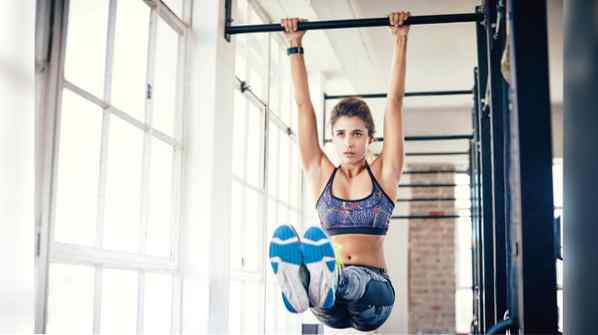
NEUSTOCKIMAGES/GETTY IMAGES
Hang Out
Your shoulders have incredible range of motion, but we spend most of our time with our arms right in front of us-tapping a keyboard, handheld device, or mouse wheel. Spending time hanging, with your arms overhead, not only helps get that range of motion back but gives your lungs room to breathe and increases circulation and blood flow to vital organs. How To: Find something sturdy to hang on-monkey bars, a pullup bar, or even the branch of a tree or a door jamb. Start by placing tension on your arms with your feet still on the ground, then gradually start to offload the weight. You can hang top-down with one or two arms, from one side, or in reverse (with the support bar behind you). Hold a few seconds, building up endurance gradually.
2 of 12
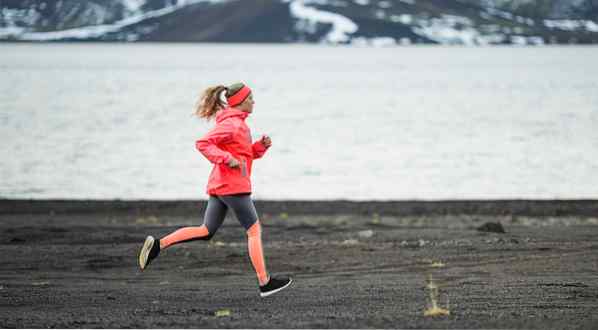
Portra / Getty
Walk Smarter
Sure, you hit the gym regularly, but how much do you walk around? Walking is crucial for the health of your bones, heart, and other organs, not to mention your mental health. Consider walking a non-negotiable movement, much like water is a non-negotiable part of your nutrition.How To: Find walking opportunities hidden within your day. Use the farthest entrance to your building or restroom, walk the dog with the kids, or schedule walking meetings and lunches. All those steps stack up!
3 of 12

FELIXHUG/ GETTY IMAGES
Take a Mini Meditation Break
A daily sitting practice helps with focus, performance, mood, and stress, among other things. But it's hard to calm the monkey mind-the part of our brains that goes crazy with thought. Tame this endless cycle by giving your mind a job, such as following the breath or body.How To: Start with five minutes. Sit in a place where you can be undisturbed. Watch the natural pace of your breath as it goes in and out of your nose. Next follow the movement of your body as you inhale and exhale. Then pay attention to your body contacting the chair or ground. Go back to your breath, then the movement, then the contact. Gently keep bringing attention back to the breath as thoughts come up.
4 of 12

Eat Something Fermented
Humans have been fermenting foods for thousands of years. These foods have been literally predigested by the beneficial bacteria found in them, so they are easy on the gut and help bring many vitamins and micronutrients you normally would not be able to absorb. On the most wanted list: yogurt, kefir, kombucha, sauerkraut, kimchi, and authentic sourdough bread.How To: Start by adding some fermented veggies as a side dish at lunch and dinner, or make yogurt the center player in your breakfast.
5 of 12
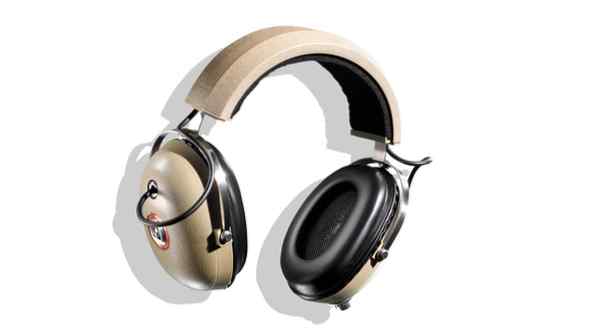
Frankie Angel/Allmay
Cut the Noise Pollution
It seems like the world never sleeps-traffic, airplanes, noise from your cubiclemates chattering. Noise, whether you notice it or not, can negatively impact productivity, raise stress levels, and even increase your risk of high blood pressure and mental illness. To keep yourself safe in today's loud world, lower the levels of the noise where you can.How To: Turn off devices you don't use, like the TV in the background. Invest in a pair of noise-canceling headphones so when you listen to music, you don't have to filter the outside noise. Sleep with earplugs and an eye mask. Soon you will feel calmer and more focused.
6 of 12
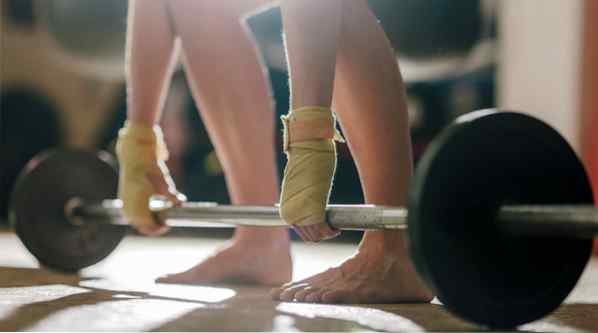
Go Barefoot More Often
Most shoes are like little foot prisons, keeping the bones and joints from the ankles on down bound up. Over time this can create balance issues, impair your walking and running, and even your ability to react to fast changes of direction. To retrain the foot, go barefoot when you can. Use a tennis ball or your hands to massage the feet so that the bones and joints can be more mobile.How To: Try walking on different surfaces (carpet, grass, sand). Pay attention to how it feels. If it's cold, put on a pair of thinner, minimal shoes that allow you to feel the surface, then take a walk on a gravel or sandy path, using your feet to “see” the different textures. SEE ALSO: Barefoot Workout Benefits
7 of 12
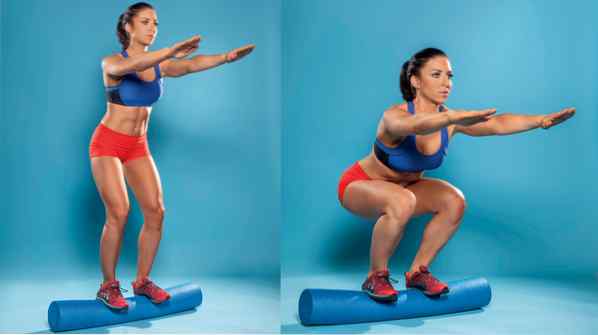
Jared Ryder
Love the Squat
You include squats as part of your strength routine, but the squat can happen outside the gym, too. Squatting down is a natural human activity that strengthens your legs, improves balance, and maintains the function of your pelvic floor.How To: Build the squat into your daily routine. Organize your kitchen shelves at home so you place the products you use the most at squat level. Or do some of your household chores on the floor, such as folding laundry or opening the mail.
8 of 12

Geber86 / Getty
Improve Your Snooze
We sleep 20% less than 50 years ago. That deprivation is causing a host of issues, from metabolic illness, obesity, and depression to feeling groggy by midday.How To: Shut off the TV and go to bed early enough so you can wake up without an alarm for two to three weeks. Once you figure out how much sleep you need, stick to the new schedule. To help your sleep quality, avoid screen devices close to bedtime, stick to decaf coffee instead of regular after noon, and make your bedroom pleasant, cool, and absolutely dark.
9 of 12
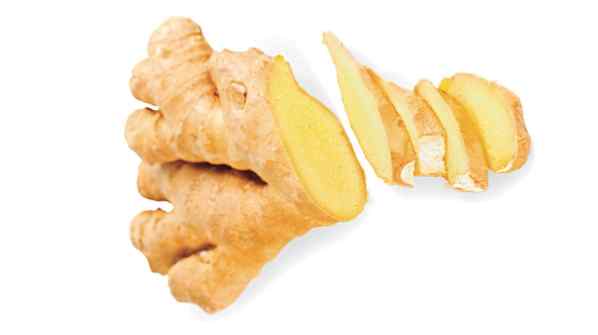
elena elisseeva/almay
Try a New Spice
Spices can be a powerful way to boost your immune system, digestion, and the flavor of your meals, all without adding any extra calories. And they can help increase the bioavailability of other nutrients in foods. Some of the heaviest hitters include garlic, ginger, cinnamon, turmeric, oregano, peppermint, rosemary, thyme, and basil.How To: It's easy to incorporate herbs and spices throughout your diet. Add a half teaspoon of cinnamon to your smoothie or oatmeal. At lunch, load your salad with basil, mint, parsley, or dill. For dinner, throw some ginger and garlic into the pot before you make your soup or stir-fry.
10 of 12

westend61/getty images
Get Off the Couch
The couch isn't bad, but sitting all day is. And while many of us sit for a living, and while eating, driving, and visiting friends, we really don't need to come home and sit more. The same angles formed by your legs, pelvis, and torso when you sit can create patterns of wear and tear, which can be detrimental to your movement and undermine your workouts.How To: Sit on the floor, not the furniture. You'll use more muscles: Your hips go through a full range of motion, and you engage the core to come down and your shoulder girdle to stabilize. The many configurations your body can take on the floor introduce new joint angles, and you'll engage your muscles with more variability.
11 of 12

Brew Some Bone Broth
The benefits of bone broth include healthy joints, muscles, skin, nails, and hair. And this clear soup isn't hard to make. Start with an easy chicken broth recipe: Every time you make or buy a roast chicken, just save the bones for your next bone broth.How To: Simmer the bones of two to three chickens in enough water to cover, then stir in 1 tbsp vinegar or lemon juice. Add a few peppercorns, a bay leaf, an onion cut in two. Place it all in a slow cooker or covered pot and cook on low for six to eight hours. You may need to add some water along the way if you're cooking on the stove. Strain your broth, and use it like you would any broth.
12 of 12

neustockimages/getty images
Slow Down Your Meals
Putting the brakes on eating can help you better digest food and feel fuller with less. It also reduces the chance of emotional eating, helping prevent the guilt spiral after overeating.How To: Take a few minutes to really notice your food as you prepare it. What colors, textures, smells, and sounds do you observe? What happy memories do you associate with it? Pause, take three deep breaths, and consider your food every few bites. Choose one meal out of your day to make your most mindful, and feel your attitude toward food change over the next week.
Back to introHang Out
Your shoulders have incredible range of motion, but we spend most of our time with our arms right in front of us-tapping a keyboard, handheld device, or mouse wheel. Spending time hanging, with your arms overhead, not only helps get that range of motion back but gives your lungs room to breathe and increases circulation and blood flow to vital organs.
How To: Find something sturdy to hang on-monkey bars, a pullup bar, or even the branch of a tree or a door jamb. Start by placing tension on your arms with your feet still on the ground, then gradually start to offload the weight. You can hang top-down with one or two arms, from one side, or in reverse (with the support bar behind you). Hold a few seconds, building up endurance gradually.
Walk Smarter
Sure, you hit the gym regularly, but how much do you walk around? Walking is crucial for the health of your bones, heart, and other organs, not to mention your mental health. Consider walking a non-negotiable movement, much like water is a non-negotiable part of your nutrition.
How To: Find walking opportunities hidden within your day. Use the farthest entrance to your building or restroom, walk the dog with the kids, or schedule walking meetings and lunches. All those steps stack up!
Take a Mini Meditation Break
A daily sitting practice helps with focus, performance, mood, and stress, among other things. But it's hard to calm the monkey mind-the part of our brains that goes crazy with thought. Tame this endless cycle by giving your mind a job, such as following the breath or body.
How To: Start with five minutes. Sit in a place where you can be undisturbed. Watch the natural pace of your breath as it goes in and out of your nose. Next follow the movement of your body as you inhale and exhale. Then pay attention to your body contacting the chair or ground. Go back to your breath, then the movement, then the contact. Gently keep bringing attention back to the breath as thoughts come up.
Eat Something Fermented
Humans have been fermenting foods for thousands of years. These foods have been literally predigested by the beneficial bacteria found in them, so they are easy on the gut and help bring many vitamins and micronutrients you normally would not be able to absorb. On the most wanted list: yogurt, kefir, kombucha, sauerkraut, kimchi, and authentic sourdough bread.
How To: Start by adding some fermented veggies as a side dish at lunch and dinner, or make yogurt the center player in your breakfast.
Cut the Noise Pollution
It seems like the world never sleeps-traffic, airplanes, noise from your cubiclemates chattering. Noise, whether you notice it or not, can negatively impact productivity, raise stress levels, and even increase your risk of high blood pressure and mental illness. To keep yourself safe in today's loud world, lower the levels of the noise where you can.
How To: Turn off devices you don't use, like the TV in the background. Invest in a pair of noise-canceling headphones so when you listen to music, you don't have to filter the outside noise. Sleep with earplugs and an eye mask. Soon you will feel calmer and more focused.
Go Barefoot More Often
Most shoes are like little foot prisons, keeping the bones and joints from the ankles on down bound up. Over time this can create balance issues, impair your walking and running, and even your ability to react to fast changes of direction. To retrain the foot, go barefoot when you can. Use a tennis ball or your hands to massage the feet so that the bones and joints can be more mobile.
How To: Try walking on different surfaces (carpet, grass, sand). Pay attention to how it feels. If it's cold, put on a pair of thinner, minimal shoes that allow you to feel the surface, then take a walk on a gravel or sandy path, using your feet to “see” the different textures.
SEE ALSO: Barefoot Workout Benefits
Love the Squat
You include squats as part of your strength routine, but the squat can happen outside the gym, too. Squatting down is a natural human activity that strengthens your legs, improves balance, and maintains the function of your pelvic floor.
How To: Build the squat into your daily routine. Organize your kitchen shelves at home so you place the products you use the most at squat level. Or do some of your household chores on the floor, such as folding laundry or opening the mail.
Improve Your Snooze
We sleep 20% less than 50 years ago. That deprivation is causing a host of issues, from metabolic illness, obesity, and depression to feeling groggy by midday.
How To: Shut off the TV and go to bed early enough so you can wake up without an alarm for two to three weeks. Once you figure out how much sleep you need, stick to the new schedule. To help your sleep quality, avoid screen devices close to bedtime, stick to decaf coffee instead of regular after noon, and make your bedroom pleasant, cool, and absolutely dark.
Try a New Spice
Spices can be a powerful way to boost your immune system, digestion, and the flavor of your meals, all without adding any extra calories. And they can help increase the bioavailability of other nutrients in foods. Some of the heaviest hitters include garlic, ginger, cinnamon, turmeric, oregano, peppermint, rosemary, thyme, and basil.
How To: It's easy to incorporate herbs and spices throughout your diet. Add a half teaspoon of cinnamon to your smoothie or oatmeal. At lunch, load your salad with basil, mint, parsley, or dill. For dinner, throw some ginger and garlic into the pot before you make your soup or stir-fry.
Get Off the Couch
The couch isn't bad, but sitting all day is. And while many of us sit for a living, and while eating, driving, and visiting friends, we really don't need to come home and sit more. The same angles formed by your legs, pelvis, and torso when you sit can create patterns of wear and tear, which can be detrimental to your movement and undermine your workouts.
How To: Sit on the floor, not the furniture. You'll use more muscles: Your hips go through a full range of motion, and you engage the core to come down and your shoulder girdle to stabilize. The many configurations your body can take on the floor introduce new joint angles, and you'll engage your muscles with more variability.
Brew Some Bone Broth
The benefits of bone broth include healthy joints, muscles, skin, nails, and hair. And this clear soup isn't hard to make. Start with an easy chicken broth recipe: Every time you make or buy a roast chicken, just save the bones for your next bone broth.
How To: Simmer the bones of two to three chickens in enough water to cover, then stir in 1 tbsp vinegar or lemon juice. Add a few peppercorns, a bay leaf, an onion cut in two. Place it all in a slow cooker or covered pot and cook on low for six to eight hours. You may need to add some water along the way if you're cooking on the stove. Strain your broth, and use it like you would any broth.
Slow Down Your Meals
Putting the brakes on eating can help you better digest food and feel fuller with less. It also reduces the chance of emotional eating, helping prevent the guilt spiral after overeating.
How To: Take a few minutes to really notice your food as you prepare it. What colors, textures, smells, and sounds do you observe? What happy memories do you associate with it? Pause, take three deep breaths, and consider your food every few bites. Choose one meal out of your day to make your most mindful, and feel your attitude toward food change over the next week.



Nimeni nu a comentat acest articol încă.